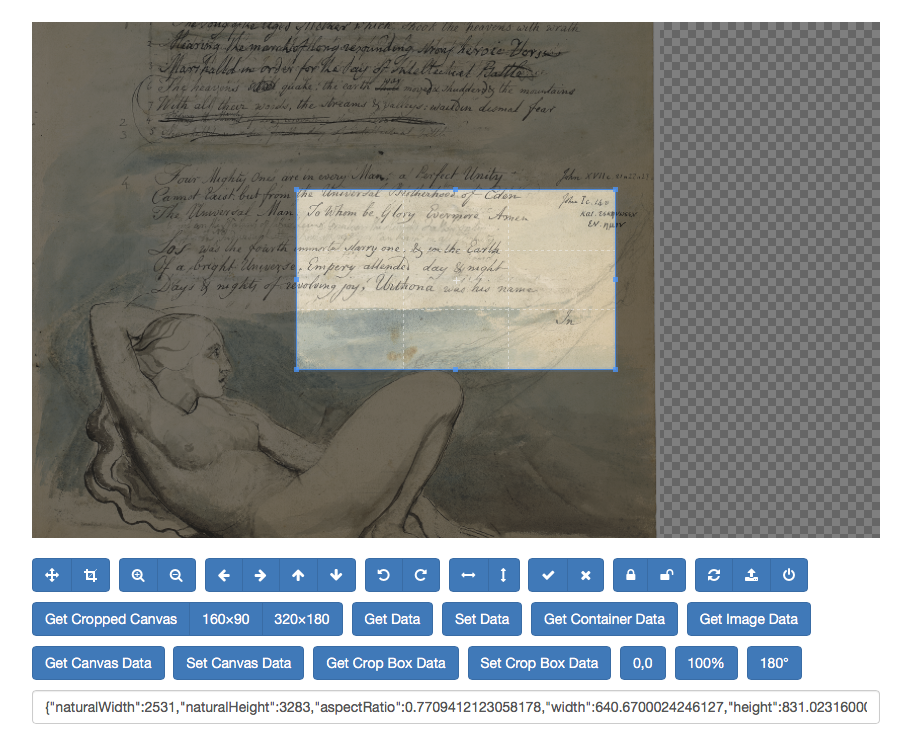In my current work, I am assisting the Technical Editor in developing a Lightbox application for the website (in which we are moving from a Java to Javascript) and I often reflect on what the lines of code that I appropriate for the application actually do to the images. This blog post is a meditation on what it means to digitize. In the Oxford English Dictionary, digitization refers to the ‘action or process of digitizing the conversion of analogue data (esp. in later use images, video, and text) into digital form’ (OED Online, 2016). I think it is rather interesting that the word “process” is used, because it is a neutral term, which hides all of the editorial decisions that are sometimes behind the conversion of the analogue to digital. But what might be even more deceiving is when the software itself manipulates or mutates the data. An interesting example of this is a JQuery library that allows one to crop an image, but resizes the image when it is loaded into the canvas (see http://fengyuanchen.github.io/cropper/). I was initially drawn to this library because it retains the metadata from the image when you crop or manipulate the image. However, if you look at the variable NaturalWidth or NaturalHeight the values remain the same, regardless of image(or image file type).
If you export the image, it is unintentionally different than the image that you placed in the canvas (even if you don’t do any editing). However, the GetImageData variable is very useful in assisting academics with questions of movement in images (like does the leg move to the left or right in subsequent editions of the book or different versions of the page), as it provides detailed information on the image. After playing around with the Javascript library for a bit, I came to the unfortunate conclusion that this library is not appropriate for Digital Humanities research. What makes this specific library nice is the fact that you can see the values of many of the variables in the Javascript on the webpage, so it does not take much knowledge of coding to see that. This makes me think about how software is developed and how some of the questions that Digital Humanists might ask (like does something move in an image depending on its edition or version?) are not built into these ready-made libraries. I am not advocating that we all learn how to necessarily build a new tool, but we learn how to engage these out-of-the-box tools on a critical level.
References:
“digitization, n.”. OED Online. June 2015. Oxford University Press. http://www.oed.com/view/Entry/240886 (accessed February 09, 2016).

